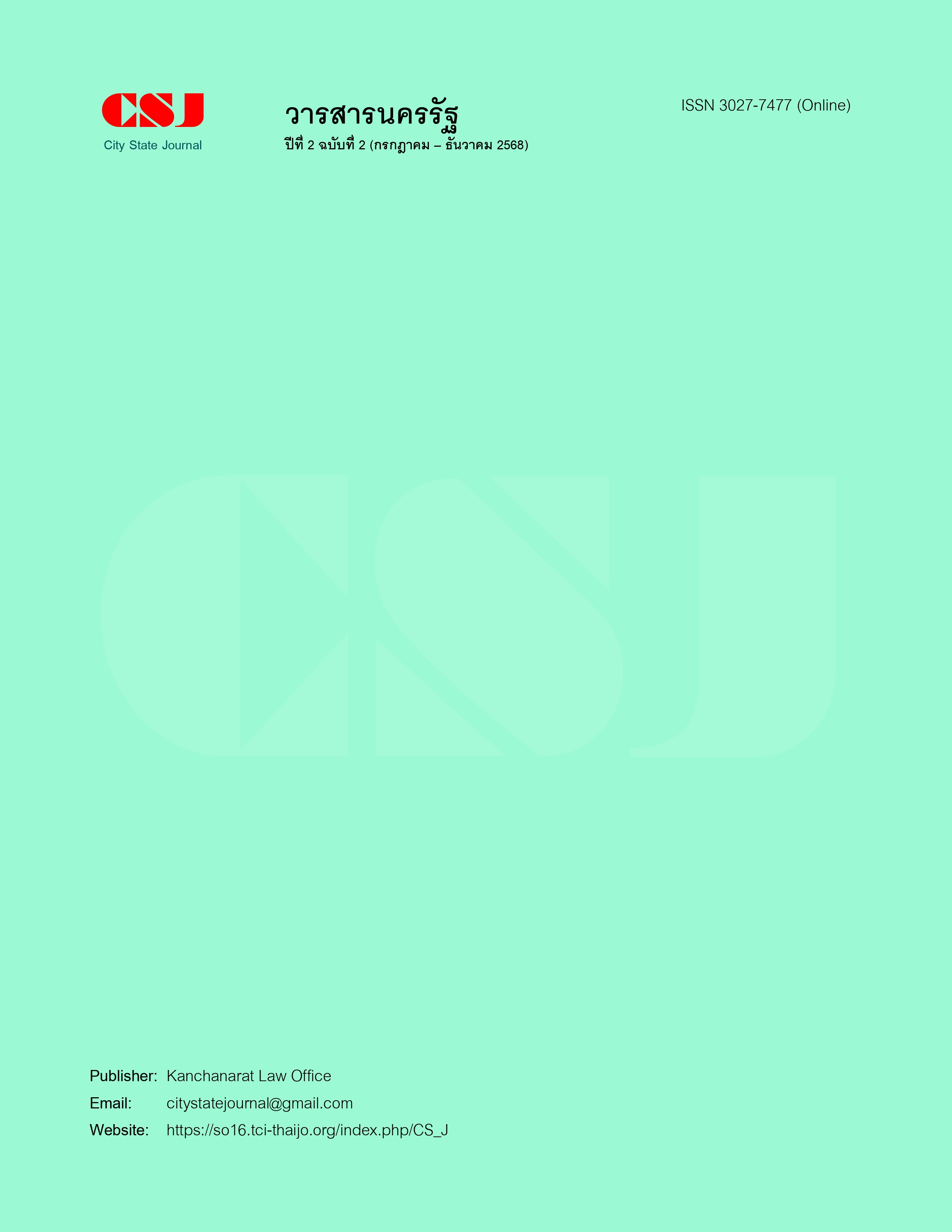The Happy Workplace According to the Attitude of Personnel Under the Office of Vocational Education Standards and Professional Certification, Office of the Vocational Education Commission, Ministry of Education
Main Article Content
Abstract
This research aims to examines the demographical factors toward the happy workplace of personnel under the Office of Vocational Education Standards and Professional Certification; and studies the attitudes of personnel under the Office of Vocational Education Standards and Professional Certification toward the happy workplace. This research uses mixed methods research between quantitative research and qualitative research. The sample used in the research was 66 people, including all levels of supervisors, government officials/government employees, and all types of employees under the Office of Vocational Education Standards and Professional Certification for the year 2024 (Central Office). The key informants used in the interviews were 6 people, including the director of bureau, group directors, government officials/government employees, and all types of employees under the Office of Vocational Education Standards and Professional Certification for the year 2024 (Central Office). The research instrument was a 5-point rating scale questionnaire with the Item-Objective Congruence between 0.60-1.00 and reliability of the questionnaire in question stood at 0.91 and interview form. The statistics used in data analysis were frequency, percentage, mean, standard deviation, t-test, One-Way ANOVA and Fisher’s Least Significant Difference test. Findings are as follows: Personnel under the Office of Vocational Education Standards and Professional Certification who differed in gender, position, and work experience did not exhibit corresponding differences in attitudes overall toward the happy workplace. Personnel who differed in educational qualifications did exhibit corresponding differences in attitudes overall toward the happy workplace at the statistically significant level of .05. The attitudes positively correlated at the medium level with the happy workplace, which was significant at the .05 level.
Article Details

This work is licensed under a Creative Commons Attribution-NonCommercial-NoDerivatives 4.0 International License.
The article published in the journal is the opinion and responsibility of the authors. Not related to Kanchanarat Law Office.
References
เกียรติพงศ์ ศิรินิภาวงศ์. (2564). ภาวะผู้นำและองค์กรแห่งความสุขที่มีความสัมพันธ์ต่อความผูกพันต่อองค์กรและประสิทธิภาพในการทำงานของพนักงานธนาคารกรุงเทพ สายบัตรเครดิต สำนักงานใหญ่. สารนิพนธ์บริหารธุรกิจมหาบัณฑิต (การจัดการ), มหาวิทยาลัยศรีนครินทรวิโรฒ.
ชาญวิทย์ วสันต์ธนารัตน์ และธีร์ธรรม วุฑฒิวัตรชัยแก้ว. (2559). มาสร้างองค์กรแห่งความสุขกันเถอะ ฉบับปรับปรุง พ.ศ. 2559. สำนักงานกองทุนสนับสนุนการสร้างเสริมสุขภาพ.
ณัฐพงษ์ น้อยโคตร. (2565). แนวทางการพัฒนาสถานศึกษาสู่องค์กรแห่งความสุข สังกัดสำนักงานเขตพื้นที่การศึกษาประถมศึกษามหาสารคาม เขต 2. วิทยานิพนธ์การศึกษามหาบัณฑิต (การบริหารและพัฒนาการศึกษา), มหาวิทยาลัยมหาสารคาม.
ณัฐพันธ์ มีมุข. (2560). อิทธิพลขององค์กรแห่งความสุขที่ส่งผลต่อความผูกพันในองค์กรของบุคลากรมหาวิทยาลัยรามคำแหง. วิทยานิพนธ์บริหารธุรกิจมหาบัณฑิต (การจัดการ), มหาวิทยาลัยรามคำแหง.
สำนักงานคณะกรรมการการอาชีวศึกษา. (2560). แผนพัฒนาการอาชีวศึกษา พ.ศ. 2560-2579. ผู้แต่ง.
Harter, J. K., Schmidt, F. L., & Hayes, T. L. (2002). Business-unit-level relationship between employee satisfaction, employee engagement, and business outcomes: A meta-analysis. Journal of Applied Psychology, 87(2), 268-279.
Miner, J.B. (1992). Industrial organization psychology. McGraw-Hill.
Krejcie, R. V., & Morgan, D. W. (1970). Determining sample size for research activities. Educational and Psychological Measurement, 30, 607-610.
Cronbach, L. J. (1951). Coefficient alpha and the internal structure of tests. Psychometrika, 16(3), 297-334.
Likert, R. (1932). A technique for the measurement of attitudes. Archives of Psychology, 22(140), 5-55.
Lindner, J. R., & Lindner, N. J. (2024). Interpreting Likert-type scales, summated scales, unidimensional scales, and attitudinal scales: I neither agree nor disagree, Likert or not. Advancements in Agricultural Development, 5(2), 152-163.

